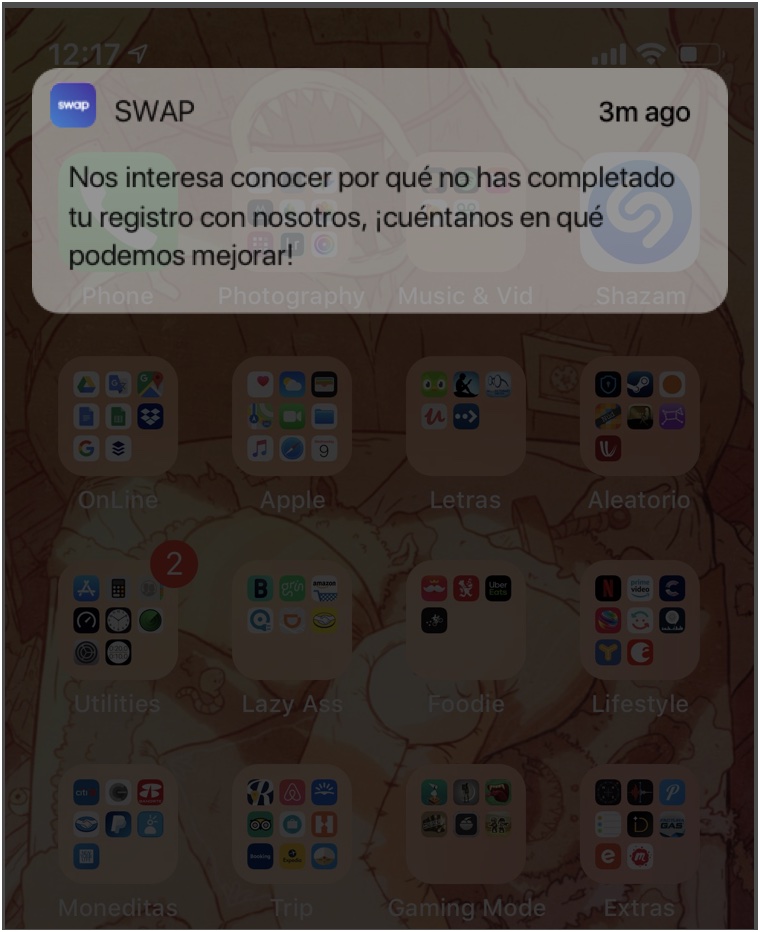- As we were going to do a usability testing about these new onboarding versions (and each testing took little time) we decided to also test the current general flow (the one appeared afterwards a user created an account as this stage was the 2nd most important one only below the creating account one).
We were going to test two different flows:
a. Onboarding
b. General Flow (beginner)
Previously defined main flows
I named the main features “Swap Jewels 💎” as they were really important for the product and each of them had a different goal.
- Payments (bank account or debit card)
- Swap Keyboard
- Payment to cellphone number (vía SMS)
- Payment to email (vía web link)
- Swap Credit
- Customer Support
📝 The Thesting Structure
Number of candidates: 5
Interview length: 30-45 minutes
Previous knowledge about Swap: none (never used it before)
What we were going to review
- 3 of the 5 different onboardings (once a user went through 3 onboardings the context of the test loses unawareness)
- Each interview will start with one different in order to the first one to have no context at all
- General Flow (payments, add card, top up balance)
Time assignation
40% Onboarding (interactive prototype)
60% General flow (production)
📝 Interview Structure
Onboarding Interview
- Explain what is an onboarding
- Let the user go through the onboarding
- After the user went through the onboarding make the next questions:
- What was this onboarding about?
- What do you think is Swap?
- What can you make with Swap?
- Who can you send payments to?
- With what you are able to pay (where the money comes from)?
- What is the difference between Swap and a bank app?
General Flow Interview
- Let the user create a new account
- When the dashboard (home) is reached, give a few seconds to understand it
- Ask the following questions
- What do you think you can do here? List all the answers
- At this moment, what would you do first?
- How would you be able to top up your balance?
- If you have to send money to a telephone number, how would you do it?
- If you have to send money to bank account, how would you do it?
- How would withdraw your money to your bank account?
- How would you ask for money to a contact?
Android Only (because of interaction differences with iOS at development decision)
- How would you send your Swap CLABE number to a WhatsApp contact?
- How would you add money to your Swap Card?
🕵🏽♀️ Results:
Onboarding
- Improvements related with the different onboarding versions.
- A rank of the most effective one to the least.
General Flow
- It is interesting to test a production feature as you can always find bugs and insights besides improvements (always).
What to do with this information?
Bugs (things not working correctly):
- Measure how many users are getting them with defined events in Amplitude.
- Define the impact it is having for the business.
- Address them to QA for them to manage when and how are they going to be added to the roadmap.
- If it is a critical bug treat it as an urgency.
Improvements(things that worked but could do it better):
- Understand them and address the correct solution.
- Measure the impact of the change.
- Meet with the PM to add them to the roadmap.
- Frequently different OS present different bugs/improvements.
- A difference in usability between a OS and the prototype would fit as an improvement.
Insights:
- Interesting findings, such as: communication issues, user behavior, user fears, positive findings, user perceptions, etc.
Usabiliity Problems
- What we found that needed some sort of fixing.
Extras
- Fixes not directly related with the flow to be reviewed.
- Less relevant but also important to address.
🔮 To be continued... or not
This was the improvement of only 1 of the 5 stages, unfortunately the project went into pause mode because of reasons (priorities, they call it) 😢.





